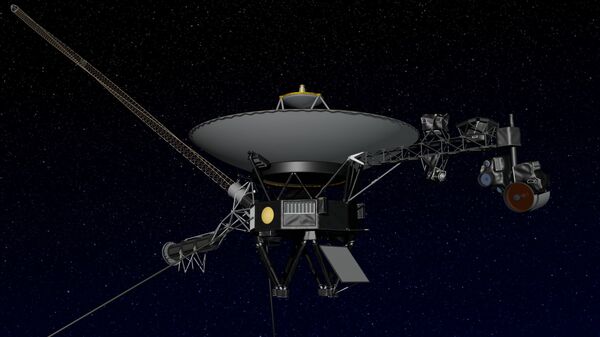MOSCOW, September 12 (RIA Novosti) – The Voyager 1 space probe has left our solar system and entered interstellar space, NASA said Thursday after analyzing recent data from the craft’s sensors.
Scientists earlier said Voyager 1, launched about 36 years ago, had already left the heliosphere – a bubble of charged particles surrounding our solar system that stretches far beyond planetary systems – and entered interstellar space, a galaxy area not occupied by stars or their planetary systems.
However, NASA denied that earlier report, saying there was not enough evidence to substantiate the claim.
“Now that we have new, key data, we believe this is humankind's historic leap into interstellar space,” Voyager project scientist Ed Stone said. “The Voyager team needed time to analyze those observations and make sense of them. But we can now answer the question we've all been asking: ‘Are we there yet?’ Yes, we are.”
The data that allowed scientists to prove the report were obtained by a group of scientists led by Don Gurnett, principal investigator of Voyager's plasma wave science (PWS) instrument.
Voyager 1 does not have a working plasma sensor, so scientists needed a different way to measure the spacecraft's plasma environment to make a definitive determination of its location.
Data obtained from Voyager 1 showed that the spacecraft was in a region with an electron density of about 0.08 per cubic centimeter. According to current models, the density of electrons in interstellar space should be between 0.05 and 0.22 per cubic centimeter.
As the space probe has no working plasma sensor, scientists measured the effects of coronal mass ejection that erupted from the sun in March 2012 and reached Voyager 13 months later. On April 9, Voyager 1's plasma wave instrument detected vibrations in the surrounding environment. The pitch of the oscillations helped scientists determine the density of the plasma.
"We literally jumped out of our seats when we saw these oscillations in our data – they showed us the spacecraft was in an entirely new region, comparable to what was expected in interstellar space, and totally different than in the solar bubble," Gurnett said. "Clearly we had passed through the heliopause, which is the long-hypothesized boundary between the solar plasma and the interstellar plasma."
According to scientists, Voyager passed through the heliopause and entered interstellar space around August 25, 2012. It is now about 19 billion kilometers (12 billion miles) from our sun.

